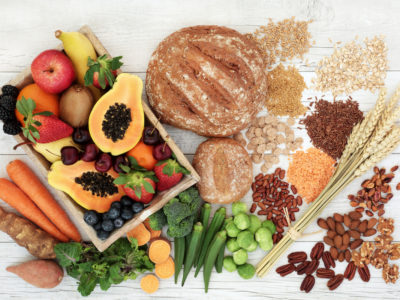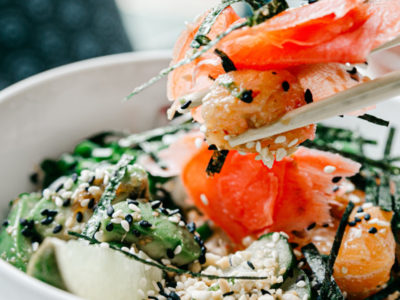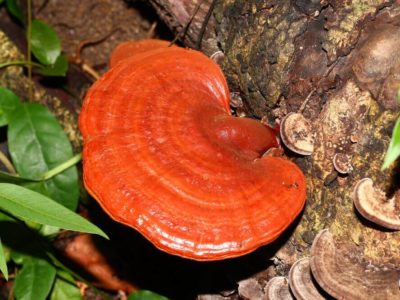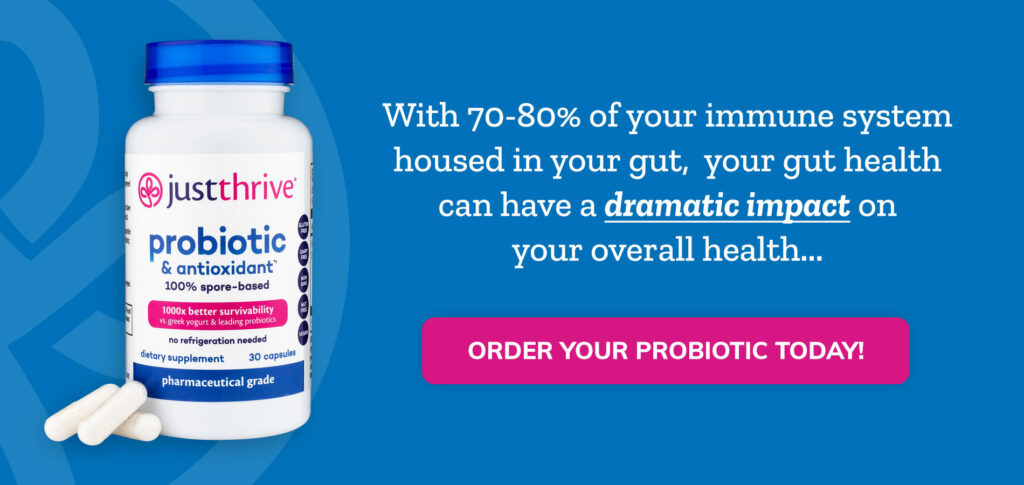Table of Contents[Hide][Show]
Have you heard of the superfood that tastes like bacon? In this article, we’ll talk about bacon-flavored seaweed and how your health will benefit from it!
Bacon ice cream, bacon cupcakes, and even a bacon jam recipe are floating around out there. For years now, bacon lovers have been trying to come up with unique ways to add the salty-crunch of this meaty delight to spice up traditional plates.
Now, bacon lovers will rejoice because nature has created the ultimate bacon recipe. It’s a seaweed that tastes exactly like bacon.
I repeat: There is a bacon-flavored seaweed, and it has more nutrients, like protein and fiber, than kale!
The Superfood Strain of Dulse
Researchers at Oregon State University’s (OSU) Hatfield Marine Science Center have patented a strain of this amazing superfood, and they’re trying to make it more affordable and available.
So, what is this godly new superfood? It’s a strain of dulse, red algae that is full of protein, minerals, and powerful antioxidant properties.
We’ve all heard of the potential health benefits of seaweed and algae – from potent antioxidant and anti-inflammatory to treatment for a range of chronic diseases.
Dulse grows along the Pacific and Atlantic coastlines and is harvested in the wild, dried, and sold. The seaweed is most abundant in the period of June to September and can be collected manually during low tide.
You may see small particles, shell pieces, and small snails when you pick them. Just spread it in an area in your yard and let it dry.
A Short Scientific Background of Dulse
Dulse has a scientific name Palmaria palmata. It is a member of the red algae and grouped in the Archaeplastida kingdom, a sub-group of eukaryotes that includes plants thriving in the land.
In photosynthesis, the red algae utilize red pigment molecules within their chloroplasts, allowing them to release energy and their distinctive color.
Red algae have been living on the planet for a long time now and have been successful in providing nutrients to humans.
The superfood dulse also thrives on the shores of Korea, Japan, Alaska, Atlantic Canada, Arctic Canada, and Arctic Russia.
A Brief History About Seaweeds
For the past 1,500 years, Europeans have consumed the seaweed dulse. Farmers in Ireland and Iceland collected strands of this superfood from their shorelines and used the seaweed as a garnish to their meals.
People during the Roman and Greek empire even used seaweed that grew in the Mediterranean Sea as medicine. In as early as 100 BC, Greeks used a certain species of red algae as a natural remedy for infections from parasitic worms.
In 800 AD, people in Japan used at least six types of seaweeds in their meals. It is just now that modern-day food fanatics have started appreciating the health benefits dulse can provide.
When Did People Start Eating Dulse?
People in Iceland were the first to use the best superfood dulse in 961 AD. The seaweed was then named as “sol” and was considered a high-value food source.
The habit of eating this superfood spread across Europe. Monks following St. Columbia harvested dulse from the shoreline of the British Isles 1,400 years ago.
This means people are have consumed dulse for a long time, so don’t be surprised if you find dulse in your snacks on the private beaches of Iceland.
The Nutrients Found in Dulse
Here’s the list of nutrients found in the superfood dulse:
Minerals
The seaweed is rich in minerals we need to consume every day. A serving of dulse can provide plenty of magnesium, chromium, calcium, potassium, and iron.
Magnesium, iron, and calcium alone are all essential for enhancing bone density. Keeping strong and healthy bones is significant, especially when people get older to prevent osteoporosis.
Iron keeps a healthy function of red blood cells and muscles. Potassium aids in reducing the strain on people’s arteries caused by high blood pressure.
Vitamins
The superfood dulse is also packed with vitamins C, B6, A, and B12.
Vitamin B12, for example, helps with the formation of red blood cells and anemia prevention. You can get this from animal-based foods.
Vitamin A aids in building and maintaining skin and soft tissues, bones, and teeth. A study even showed that the vitamin slows down the development of cataracts in people’s eyes.
Vitamin C is the key factor in keeping our immune system stronger. It also acts as an antioxidant and helps with collagen production and white blood cell count.
Omega-3 and Omega-6
Commonly, red algae are rich in polyunsaturated fatty acids (PUFAs), but dulse contains two interesting PUFAs: omega-3 and omega-6. These fatty acids work great together in our body as they aid in multiple functions, such as proper functioning of the nervous system and brain, stabilizing blood pressure, and preventing blood clotting.
Protein
A 3.5-ounce serving of fresh dulse gives you about 21.5 g of protein from your daily total calories. This means 21 g of protein is 43% of the body’s daily requirement of protein, based on the Food and Drug Administration’s recommendation.
Protein primarily helps in building and repairing tissues in the body. It is also essential in creating hormones, enzymes, and other body chemicals.
You can substitute dulse for meat for a source of protein, especially if you are a vegetarian, and add this to your collection of fruits and vegetables or leafy greens.
Fiber
The superfood dulse contains large amounts of fiber as well. A 2-ounce serving has 16 g of fiber.
Dietary fiber primarily aids in regulating the body’s digestive process. It bulks up the stool for an easier release of waste material.
Since you’ll maintain a healthy bowel movement or digestive process with fiber, you’ll also have a healthy weight, lowering the risk of becoming overweight or suffering from obesity.
Related
Fiber 101: An In-Depth Guide
Learn the difference between soluble and insoluble fiber, the best way to add it to your diet (as well as what to avoid), and some of its biggest health benefits of fiber.
A Word of Caution About Iodine
Iodine is a mineral our thyroid gland needs for proper functioning, and most seaweeds contain high levels of it. If you consume too much iodine, this will possibly interfere with the hormone balance in your thyroid, so eat the superfood in moderate amounts.
It may be best for people with hypothyroidism and hyperthyroidism to avoid eating dulse just to be safe. If you want to make sure, consult your doctor for proper medical guidance.
How to Prepare Dulse
Typically, you may be buying and cooking dried dulse as one of your ingredients, not fresh dulse. You don’t have to worry, though, because its nutritional value does not degrade when it’s converted into flakes or powder.
Store the superfood in a dry, dark place in your home. You can prepare dulse fried, fresh, or dried into flakes and sprinkle on salads and soups.
If you eat the seaweed fresh, it provides a pleasant texture, is chewy, and easy to eat.
For fried, you can lightly oil your pan and then heat up the dulse strips for 3-4 minutes, stirring them around. Do this until they are crispy enough to your taste.
You can even put together tomatoes, lettuce, and dulse for a healthier salad option to add to your balanced diet. You can also microwave them briefly or bake in the oven with cheese.
Dulse can be added into pizza or bread dough, sandwiches, chowders, and soups as well.
Bringing Dulse to the Market
The researchers at OSU started growing the plant to feed abalone, but now they want to start feeding it to us. We can thank Chuck Toombs, a faculty member of OSU’s College of Business, for this genius idea.
“Dulse is a superfood, with twice the nutritional value of kale,” Toombs said in a statement. “And OSU had developed this variety that can be farmed, with the potential for a new industry for Oregon.”
Currently, no commercial operation grows dulse in the U.S., but researcher Chris Langdon and his team hope to bring it to the market. As for me, I hope it works out.
“There hasn’t been a lot of interest in using it in a fresh form. But this stuff is pretty amazing,” Langdon said. “When you fry it, which I have done, it tastes like bacon, not a seaweed. And it’s a pretty strong bacon flavor.”
If that isn’t convincing enough, I don’t know what is. Healthy bacon? I never thought I’d see the day.
I’m eagerly awaiting for this superfood to hit the market.
The superfood dulse is slowly receiving attention in the culinary and medical fields primarily because of its nutrients that offer wonderful health benefits. If you’re interested in adding this seaweed superfood to your weight loss diet, just make sure to consult your dietician first so you will be guided accordingly.
You May Also Like…
Editor’s Note: This post was originally published on July 23, 2015, and has been updated for quality and relevancy.





